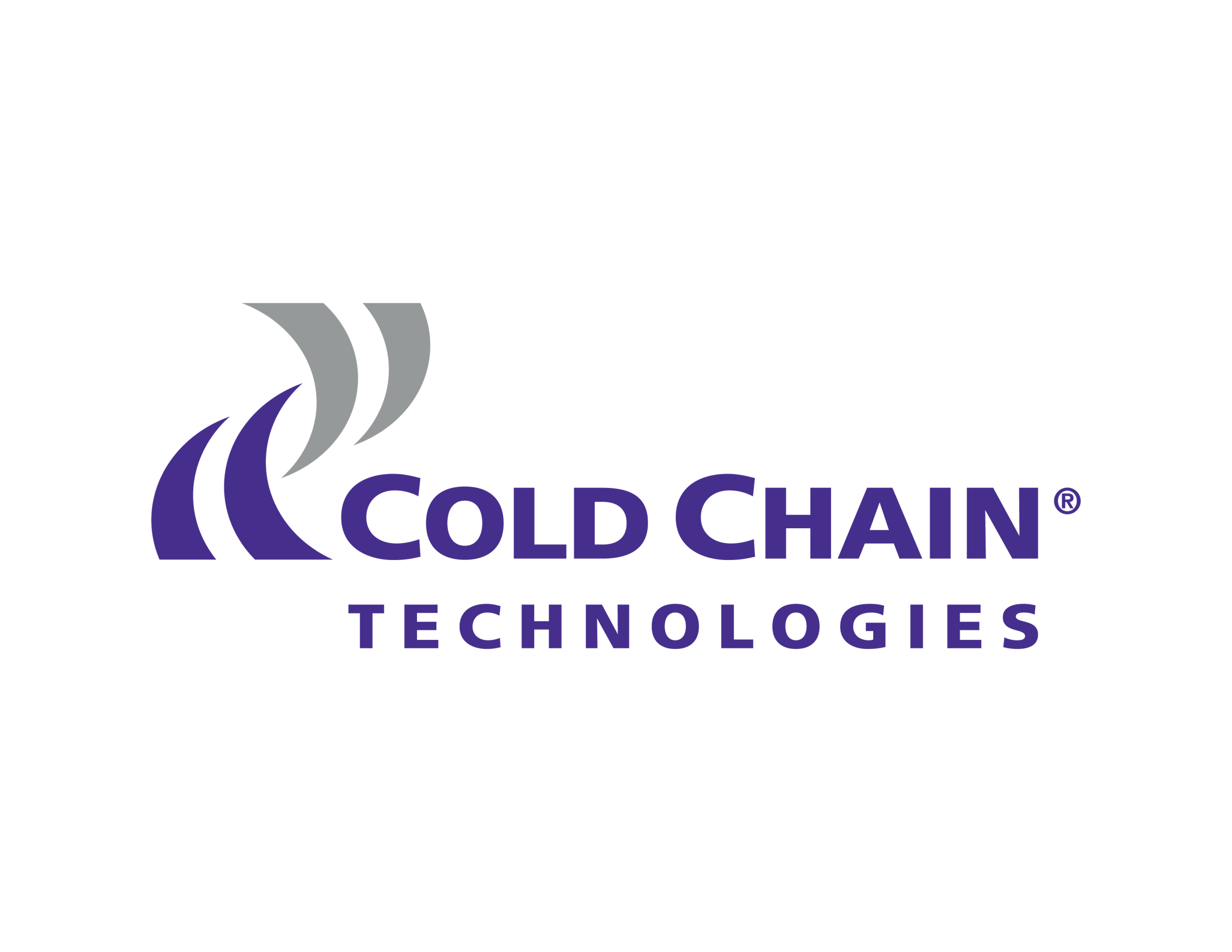Learn why thermal solutions are a must-have for cold chain integrity
Thermal solutions are specialized packages designed to meet the thermal requirements of temperature-sensitive products. Examples of thermal solutions include insulated containers, vaccine and medical transport boxes, specialized insulated parcel systems, reusable containers, and more.
These thermal solutions are used to protect temperature-sensitive or cold chain products including pharmaceuticals, vaccines, biologics, lab samples, diagnostic materials, food, and beverages.
Thermal solutions or thermal packaging are an important part of the cold chain management process, ensuring product efficacy, product safety, and adherence to regulatory requirements. In fact, insulated containers, envelopes, pallets, and more are the first line of defense in protecting cold chain products from damage and are critical to enabling a successful cold supply chain.
Keep reading to learn more about thermal solutions including:
- How thermal solutions protect cold chain products
- Questions to ask when researching thermal solutions
- The differences between active, passive, and hybrid temperature-controlled packaging
- 3 top trends driving cold chain packaging
How Thermal Solutions Protect Cold Chain Products
Smart thermal packaging and thermal solutions protect cold chain products with a design and application process that considers both what it is in the box and what is likely to happen outside the box.
An insulated thermal solution cannot work alone. When your insulated container is left outside exposed to the sun or stranded for weeks in a shipping container, the packaging can only do so much to protect your products.
A proactive thermal solution goes beyond the package and considers every single what if scenario that your cold chain products may experience through-out the cold supply chain.
Thermal solutions and packaging are designed to fulfill these key responsibilities:
- Protect and Guarantee: the main responsibility of thermal solutions is to protect cold chain products from the risks and dangers of the cold supply chain. Additionally, thermal solutions serve as a guarantee that the contents are safe and have been protected in adherence to industry regulations and requirements.
- Store and Transport: the right thermal solution is easy to store and transport and designed to be handled by humans and machinery. It’s critical your thermal solutions are designed and chosen to fit and work within your unique cold supply chain.
How are your products shipped? Is your manufacturing and distribution co-located or do your products need to be moved from your manufacturing operations to your distribution center to be packaged for transport? Will your products spend long periods in shipping containers or stored in warehouses at the customer site?
- Sell and Market: smart thermal packaging is designed with the customer and brand in mind. Both B2B and B2C customers are attracted to products packaged in easy to handle, open, store, and understand packaging.
- Communicate: storage instructions, ingredients, safety warnings and hazards, marketing messaging, dosage recommendations, and regulatory language must all be clearly readable and accessible on your thermal packaging.
Smart thermal solutions do not assume the customer or the people responsible for storing or warehousing your products have any product knowledge. Critical to the success of the cold supply chain is knowing that once products reach their destination they are stored, distributed, and ultimately used correctly and safely.
Well-thought-out thermal solutions must also be environmentally responsible. Thermal solutions that can be reused, recycled, and serve secondary roles including storage and display are a must-have in today’s environment.
Questions to Ask When Researching Thermal Solutions
You need to make sure you’re buying and using the right thermal solution for your products and cold supply chain.
When researching thermal solutions and talking to thermal packaging designers and providers, keep in mind these questions:
Product questions:
What types of cold chain products do I need to protect? Will different types of products be transported in the same shipment? What are the unique demands and requirements of my cold chain products?
Temperature and environment questions:
What are the temperature ranges for my cold chain products? What are the environmental risk factors through-out the cold supply chain? Will my products be traveling through multiple temperature and humidity zones? What are the regulatory temperature requirements and standards?
Thermal packaging and solutions questions:
How was the thermal packaging designed? What type of analysis was used to ensure this packaging can protect my cold chain products? How is the thermal packaging tested to ensure it can maintain the integrity, quality, and safety of my cold chain products? How can I track my packages as they move through the cold supply chain? What about real-time temperature alerts? Is this thermal packaging reusable and returnable?
Cold chain management process questions:
What are the elements of my cold chain management process? How are my products stored and transported? What kind of tracking do I need to ensure the cold chain is maintained? What types of training and experience do the people handling my temperature-sensitive products have? What are the risks within the cold supply chain that I need to protect against and be ready for? What are the customs clearance and paperwork requirements? How are products delivered and warehoused?
There are three types of thermal solutions: active, passive, and hybrid. Each of these thermal packaging types has its own pros and cons – largely based on your needs and those of your cold chain management process.
When learning about thermal solutions and the best way to protect, ship, and distribute your cold chain products, make sure you know these facts on active, passive, and hybrid thermal solutions.
- Active Thermal Solutions
Rely on electronic or battery-powered mechanisms to control the temperature. These thermal solutions are very similar to refrigerators or freezers in how the temperature is managed and maintained. Depending on the design, active thermal solutions must be plugged-in or charged to ensure efficacy.
Active thermal solutions are typically used for cold chain products that require a high level of security. These thermal solutions are generally very expensive to operate and transport.
- Passive Thermal Solutions
Passive thermal solutions typically offer the best balance between cost, durability, efficacy, usability, reusability, and customer friendliness. Examples of passive thermal solutions include reusable shippers, sustainable parcel systems, and insulated containers and envelopes.
Passive thermal solutions use advanced cooling and temperature maintenance technologies to maintain tighter temperature ranges. Today with the boom in ecommerce, home-food delivery companies, environmental awareness, and the need to quickly ship medications worldwide, passive thermal solutions are the go-to choice for most companies.
- Hybrid Thermal Solutions
Hybrid thermal solutions use a combination of active and passive thermal packaging technologies. Typically, a hybrid thermal solution use passive cooling and temperature regulation as a back-up for when the active thermal technology fails or is not available.
3 Top Trends Driving Thermal Solutions Packaging
Gone are the days of thick cumbersome foam insulation or relying on ice to keep food, medication, and beverages protected and safe.
Make sure you keep an eye on these 3 top trends driving thermal solutions packaging design, research, and use:
Sustainability and Reusability
Your customers care about how your thermal packaging is sourced and how it can be reused, recycled, refurbished, returned, and repurposed. The environmental impacts of thermal packaging and all packaging in general is a catalyst for change in how thermal solutions are designed, sourced, manufactured, and used. This demand is pushing companies like ours to think outside the box, developing reusable shipping solutions and tailored refurbishment and return programs.
Smart Technology
Every aspect of the cold supply chain can be converted to data, generating real-time updates and feedback. Whether it’s real-time temperature monitoring with Bluetooth-enabled updates to your smart device or IoT sensors monitoring the flow of goods to identify slow-downs or improving fleet communications with instant messaging and handsfree technology – smart technology is reshaping the cold chain management process and driving higher expectations for product durability, sustainablity, efficacy, and security.
Global Pandemic
The global pandemic has transformed the visibility of supply chains and cold supply chains. Prior to early 2020, very few people outside of the industry were talking about supply chain issues, wait times, lack of resources, and the risks involved with shipping and storing vaccines, biologics, food, and beverages.
Couple this with a heightened increase in e-commerce thanks to shut-downs, lockdowns, and recommendations to stay home – there is no limit on the types and volume of products and goods sold online. The rise in grocery delivery, at-home meal kits, and food delivery alone has sparked a demand for better, smarter, reusable, easy-to-use, and turn-key thermal packaging.
Both B2B and B2C customers are invested in knowing where their cold chain products are coming from, how they will move through the cold supply chain, and how they are packaged. The global pandemic has encouraged companies to look to blockchain, automation, artificial intelligence, sustainably sourced materials, and more when designing and choosing thermal packaging.
Do not settle for a cookie-cutter thermal packaging approach.
Take advantage of our expertise and services in thermal packaging design, reusable thermal packaging, thermal packaging qualification, and thermal modeling to ensure you’re getting the right thermal packaging for your cold chain products.
Sign up for Cold Chain Tech blog updates to learn the latest in thermal solutions and packaging, and how the Cold Chain Tech team helps you maintain the integrity, safety, and quality of your temperature-sensitive products.


